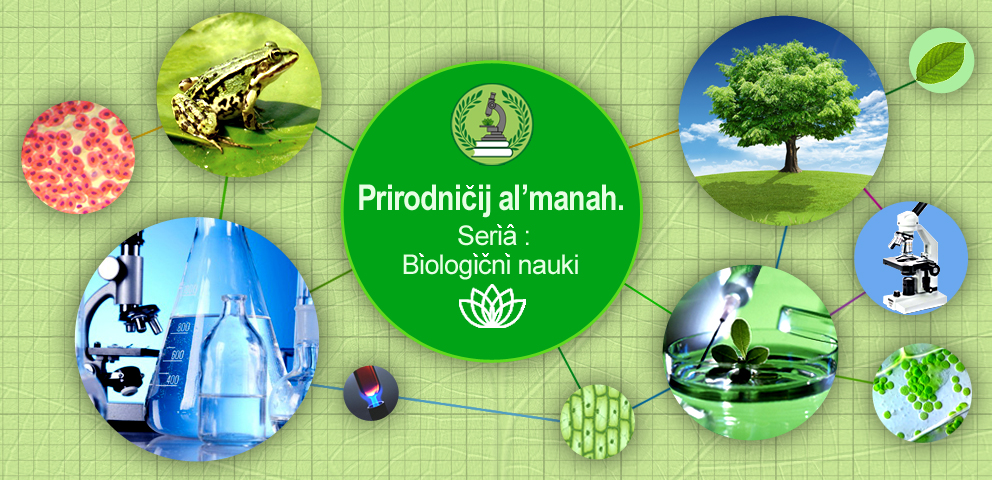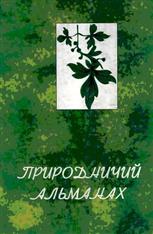NEW FINDINGS OF ALIEN PLANT ERGAZIOPHYTES IN THE LEFT BANK FOREST-STEPPE OF UKRAINE
D. A. Davydov
Abstract
The article summarizes the data on the distribution of 25 alien vascular plants in the territory of the Left Bank Forest-Steppe of Ukraine. All of them are ergaziophytes (mostly ornamental plants) escaped from their areas of cultivation. Ten species (Callistephus chinensis (L.) Nees, Iberis umbellata L., Lobularia maritima (L.) Desv., Ricinus communis L., Hemerocallis fulva (L.) L., Iris germanica L., Salvia sclarea L., Mirabilis jalapa L., Sorghum drummondii (Nees ex Steud.) Millsp. & Chase and Viola sororia Willd.) have been firstly found as wild plants in this region. Four species (Rudbeckia triloba L., Euphorbia marginata Pursh, Portulaca grandiflora Hook. and Solanum lycopersicum L.) are new for Poltava region, one (Solidago gigantea W.T. Aiton) – for Sumy region, two (Allium tuberosum Rottler ex Spreng. and Salvia sclarea L.) – for Kharkiv city and Kharkiv region. The data of distribution of Amaranthus caudatus L. in the Left Bank Forest-Steppe of Ukraine were confirmed by herbarium specimen. Other eight species (Allium schoenoprasum L., Calendula officinalis L., Heliopsis helianthoides (L.) Sweet, Symphyotrichum novae-angliae (L.) G.L. Nesom, Dianthus barbatus L., Phedimus spurius (M. Bieb.) 't Hart, Phlox paniculata L., Solanum tuberosum L.) belong to locally distributed alien plants. Based on analysis of the chorology of these species, it is found that eight alien plants have North-American origin, other main regional chorological groups are represented by species from Eastern Asia (4), South America (3) and Europe (3). Major part of the found alien plants includes ephemerophytes in the Left Bank Forest-Steppe of Ukraine (22 species), only three representatives (Heliopsis helianthoides, Phedimus spurius and Solidago gigantea) are naturalized on this territory and belong to the stable floristic component. Two species (Hemerocallis fulva and Iris germanica) are sporadically distributed in different locations, but represented by vegetative clones only and have not been considered as elements of the spontaneous flora.
References
2. Бортняк НН, Войтюк ЮА, Голяченко ТВ, Любченко ВМ. Адвентивные растения и одичавшие интродуценты флоры Среднего Приднепровья. Бюллетень Главного ботанического сада. 1992;163:57-62.
3. Двирна ТС. Адвентивная фракция флоры Роменско-Полтавского геоботанического округа: анализ и конспект. Фиторазнообразие Восточной Европы. 2014;8(1):4-19.
4. Звягінцева КО. Знахідки адвентивних рослин у флорі м. Харкова. Український ботанічний журнал. 2013;70(6):772-775.
5. Чопик ВІ, Бортняк ММ, Войтюк ЮО, Погребенник ВП, Кучерява ЛФ та ін. Конспект флори Середнього Придніпровʼя. Судинні рослини. Ред. Чопик ВІ. Київ: Фітосоціоцентр. 1998. 140 с.
6. Шевера МВ, Орлов ОО, Волуца ОД, Кіш РЯ. Rudbeckia triloba (Asteraceae) – новий вид адвентивних рослин у флорі України. Чорноморський ботанічний журнал. 2020;16(2):135-143. DOI: 10.32999/ksu1990-553X/2020-16-2-3
7. Шиндер ОІ. Спонтанна флора Національного ботанічного саду імені М.М. Гришка НАН України (м. Київ). Повідомлення 3. Адвентивні види: Ергазіофіти. Інтродукція рослин. 2019;3:14-29.
8. Davydov DA, Gomlya LM. Floristic diversity of steppe territories near Poltava town (Ukraine). Biosystems Diversity. 2020;28(1):81-91. DOI: 10.15421/012012
9. Fritsch RM, Friesen N. Evolution, domestication and taxonomy. Allium crop science: Recent advances. Eds. Rabinowitch HD, Currah L. Wallingford: CAB International. 2002. P. 5-30.
10. Guo WY, van Kleunen M, Pierce S, Dawson W, Essl F et al. Domestic gardens play a dominant role in selecting alien species with adaptive strategies that facilitate naturalization. Global Ecology and Biogeography. 2019;28:628-639. DOI: 10.1111/geb.12882
11. iNaturalist. Available from https://www.inaturalist.org. Accessed 01.11.2020.
12. Lambdon PW, Pyšek P, Basnou C, Hejda M, Arianoutsou M et al. Alien flora of Europe: species diversity, temporal trends, geographical patterns and research needs. Preslia. 2008;80:101-149.
13. Lazzaro L, Essl F, Lugliè A, Padedda BM, Pyšek P, Brundu G. Invasive alien plant impacts on human health and well-being. Invasive species and human health. Eds. Mazza G, Tricario E. Wallingford: CAB International. 2018. P. 16-33.
14. Protopopova VV, Shevera MV. Ergasiophytes of the Ukrainian flora. Biodiversity Research and Conservation. 2014;35:31-46. DOI: 10.2478/biorc-2014-0018
15. Pyšek P, Danihelka J, Sádlo J, Chrtek Jr. J, Chytrý M et al. Catalogue of alien plants of the Czech Republic (2nd edition): checklist update, taxonomic diversity and invasion patterns. Preslia. 2012;84:155-255.
16. Schroeder FG. Zur Klassifizierung der Antropochoren. Vegetatio. 1969;16(5-6):225-238.
17. Thellung A. Zur Terminologia der Adveuntive- und Ruderalflora. Allgemeine Botanische Zeitshrift. 1919;24-25:36-42.
18. Zvyagintseva KO. An annotated checklist of the urban flora of Kharkiv. Ed. Shevera MV. Kharkiv: V.N. Karazin Kharkiv National University. 2015. 96 p.

